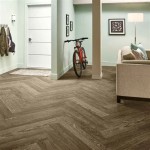How to Install Vinyl Sheet Flooring On Stairs
Installing vinyl sheet flooring on stairs presents a practical and aesthetically pleasing solution for upgrading a home's interior. Vinyl offers durability, water resistance, and ease of maintenance, making it an ideal choice for high-traffic areas like staircases. While seemingly straightforward, the process involves careful planning, precise measurements, and diligent execution to achieve a professional and long-lasting result. This article provides a comprehensive guide to installing vinyl sheet flooring on stairs.
I. Preparation is Paramount
Effective preparation forms the bedrock of a successful vinyl sheet flooring installation on stairs. This phase encompasses assessing the existing stair structure, gathering necessary tools and materials, and meticulously preparing the stair surfaces to ensure optimal adhesion and a flawless finished appearance.
A. Assessing the Existing Stair Structure: The initial step involves a thorough evaluation of the current state of the staircase. Note any existing damage, such as cracks, splinters, loose treads, or uneven surfaces. These irregularities must be addressed before proceeding with the vinyl installation, as they can compromise the final result's integrity and appearance. Check if the stairs are structurally sound. If there's significant damage that affects the structural integrity, consult a professional contractor before proceeding.
B. Gathering Necessary Tools and Materials: The right tools and materials significantly contribute to a smoother and more efficient installation process. Essential items include:
*Vinyl Sheet Flooring: Select a high-quality vinyl sheet specifically designed for stair applications. Ensure sufficient material to cover all stair treads and risers, accounting for overlaps and waste during cutting. It's always a good idea to purchase slightly more than the calculated amount to compensate for errors.
*Measuring Tape: Accurate measurements are crucial. A durable and easy-to-read measuring tape is essential.
*Straight Edge (e.g., Metal Ruler or Level): A straight edge aids in making precise cuts and ensuring straight lines.
*Utility Knife with Sharp Blades: A utility knife with replaceable blades ensures clean and precise cuts through the vinyl sheeting. Dull blades can tear the vinyl, leading to an unprofessional finish.
*T-Square or Combination Square: These tools are used to create accurate right angles, essential for precise cuts on risers and treads.
*Pencil or Marker: Used for marking cutting lines on the vinyl sheeting.
*Adhesive: Choose a high-quality adhesive specifically formulated for vinyl sheet flooring. Ensure compatibility with the selected vinyl type and substrate. Consider the drying time and application method specified by the manufacturer.
*Notched Trowel: A notched trowel is used to apply the adhesive evenly across the stair surfaces. The notch size should correspond to the adhesive manufacturer's recommendations.
*Seam Roller: A seam roller helps to firmly press the vinyl sheeting into the adhesive, ensuring a strong and even bond. This step is particularly important for stair nosing.
*Caulk Gun and Color-Matching Caulk (Optional): Used to seal the edges of the vinyl flooring against the wall or stringer, providing a watertight and aesthetically pleasing finish.
*Safety Glasses: Protect eyes from debris during cutting and sanding.
*Dust Mask: Protect respiratory system from dust particles during sanding and cleaning.
*Gloves: Protect hands from adhesive and sharp tools.
*Sandpaper or Grinding Block: Used to smooth out imperfections on the stair surfaces.
*Cleaning Supplies (Vacuum, Broom, Damp Cloth): Essential for thoroughly cleaning the stair surfaces before applying adhesive.
C. Preparing the Stair Surfaces: The stair surfaces must be clean, smooth, and dry to ensure proper adhesion of the vinyl sheeting. The preparation process involves:
*Cleaning: Thoroughly vacuum or sweep the stairs to remove any loose debris, dirt, or dust. Follow up with a damp cloth to remove any remaining residue. Ensure the surfaces are completely dry before proceeding.
*Repairing: Fill any cracks, holes, or imperfections with wood filler or patching compound. Allow the filler to dry completely according to the manufacturer's instructions. Sand the filled areas smooth to create a level surface.
*Sanding: Sand the stair treads and risers to create a slightly rough surface. This will improve the adhesive's bonding capabilities. Remove any sanding dust with a vacuum or damp cloth.
*Priming (Optional but Recommended): Apply a thin coat of primer specifically designed for vinyl flooring. Priming promotes adhesion and can help to prevent moisture from penetrating the subfloor. Allow the primer to dry completely before proceeding.
II. Cutting and Fitting the Vinyl Sheeting
Precise cutting and fitting of the vinyl sheeting are crucial for achieving a professional-looking and durable installation. This phase requires careful measurements, accurate marking, and meticulous cutting techniques.
A. Measuring the Stair Components: Measure the width and depth of each stair tread and the height of each riser. Since stairs may not be perfectly uniform, measure each one individually. Record these measurements accurately. For stairs with nosing (the overhanging edge of the tread), measure the nosing depth separately. Add this nosing depth to the tread depth measurement to ensure the vinyl covers the entire tread surface.
B. Creating Templates (Recommended): For complex stair shapes or if uncertain about cutting accuracy, create cardboard templates for each tread and riser. Place the cardboard on the stair, carefully trace the outline, and cut along the traced lines. These templates serve as accurate guides for cutting the vinyl sheeting. Number each template to correspond to the specific stair it represents.
C. Transferring Measurements to the Vinyl Sheeting: Place the vinyl sheeting on a flat, clean surface. Using the measurements or templates, carefully transfer the dimensions of each tread and riser onto the vinyl. Use a straight edge and a pencil or marker to draw clear cutting lines. Remember to account for any overlaps or wraps required for the nosing or edges.
D. Cutting the Vinyl Sheeting: Using a sharp utility knife and a straight edge, carefully cut the vinyl sheeting along the marked lines. Apply consistent pressure to the knife to ensure a clean cut. For thicker vinyl, multiple passes with the utility knife may be necessary. Cut slightly larger than the exact measurement at first. You can trim any excess vinyl later for a perfect fit. Exercise extreme caution when using the utility knife to avoid injury.
E. Dry Fitting: Before applying adhesive, dry fit each piece of vinyl sheeting onto the corresponding stair tread or riser. Check for proper fit and make any necessary adjustments with the utility knife. This step ensures that the vinyl fits perfectly and prevents errors during the adhesive application phase.
III. Applying Adhesive and Securing the Vinyl
The adhesive application and securing phase involve applying the appropriate adhesive, carefully positioning the vinyl sheeting, and ensuring a strong and even bond between the vinyl and the stair surfaces.
A. Applying the Adhesive: Follow the adhesive manufacturer's instructions for application. Typically, this involves using a notched trowel to apply a thin, even layer of adhesive to the stair tread or riser. Ensure full coverage of the surface, paying particular attention to the edges and corners. Avoid applying too much adhesive, as this can cause bubbles or unevenness in the vinyl flooring. Work in small sections to prevent the adhesive from drying out before the vinyl is applied.
B. Positioning the Vinyl Sheeting: Carefully position the cut vinyl sheeting onto the adhesive-covered stair tread or riser. Align the edges precisely and gently press the vinyl into the adhesive. Work from the center outwards to avoid trapping air bubbles.
C. Rolling and Securing: Use a seam roller to firmly press the vinyl sheeting into the adhesive. Apply consistent pressure to ensure a strong and even bond. Pay particular attention to the edges, corners, and nosing. For stairs with nosing, carefully wrap the vinyl around the edge and secure it with the seam roller. Some installations also use stair clamps or temporary bracing to maintain pressure while the adhesive cures. Follow the adhesive manufacturer's recommended curing time before allowing foot traffic on the stairs. Typically, it's recommended to wait at least 24 to 48 hours.
D. Trimming Excess Vinyl: Once the adhesive has cured, carefully trim any excess vinyl along the edges of the stairs using a sharp utility knife. Make clean, precise cuts to create a professional finish. Use a straight edge to guide the knife for straight lines.
E. Caulking (Optional): Apply a bead of color-matching caulk along the edges of the vinyl flooring where it meets the wall or stringer. This creates a watertight seal and provides a clean, finished appearance. Smooth the caulk with a wet finger or a caulking tool.
Following these steps meticulously will result in a durable, attractive, and professionally installed vinyl sheet flooring on the stairs, enhancing the beauty and functionality of the home. Attention to detail throughout each stage is crucial for a successful outcome.

How To Install Vinyl Plank Flooring On Stairs In 6 Steps Inc

How To Install Vinyl Plank Flooring On Stairs In 6 Steps Inc

Pros And Cons Of Installing Vinyl Flooring On Stairs

How To Install Vinyl Plank Flooring On Stairs Diy

Pros And Cons Of Installing Vinyl Flooring On Stairs Lx Hausys

Pros And Cons Of Installing Vinyl Flooring On Stairs

How To Install Vinyl Sheet Flooring On A Staircase

Pros And Cons Of Installing Vinyl Flooring On Stairs Lx Hausys

How To Install Vinyl Plank Flooring On Stairs

Finishing Garage Stairs Using Vinyl Flooring
Related Posts








